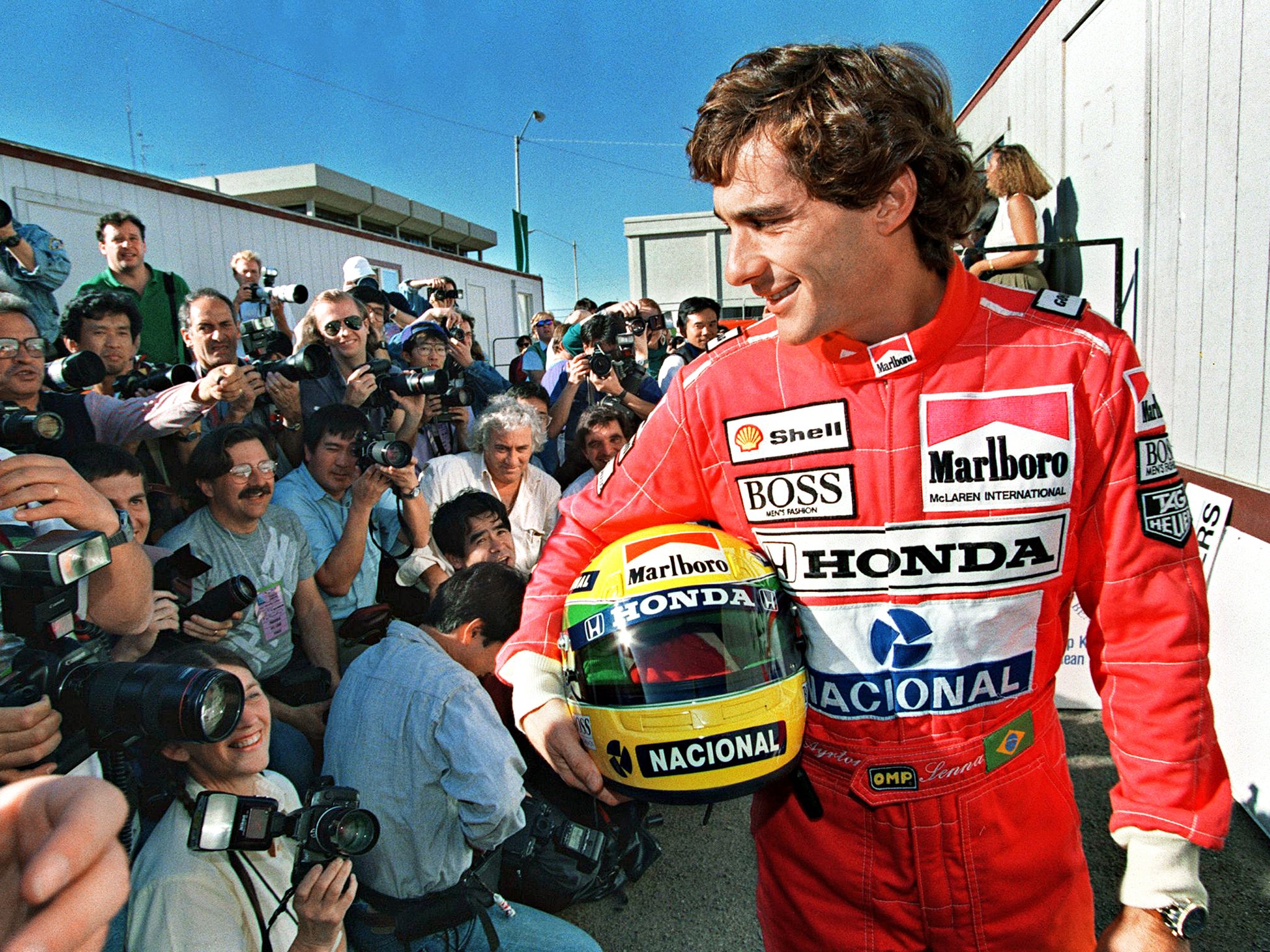Ayrton Senna: The one positive from Senna's death has seen safety improvements prevent any further deaths in F1 20 years on
No driver has died in F1 since Senna's tragic crash at Imola 20 years ago

If there was one lasting legacy left by the tragic deaths of Ayrton Senna and Roland Ratzenberger 20 years ago at Imola, it was the impact they had on attitudes towards driver safety in Formula One.
It is testament to the measures implemented since that no driver has lost his life over the course of an F1 weekend since Senna on May 1, 1994 and Ratzenberger the day before.
Former FIA president Max Mosley was the pioneer, vowing then that F1 would never again be plunged into such darkness, believing if one of the sport's greatest drivers could so needlessly lose his life that change was drastically required.
Following the events at Imola, Mosley commissioned the late Professor Sid Watkins, the FIA's former medical delegate and one of Senna's closest friends, to chair the Expert Advisory Safety Committee.
Together with a number of influential figures, including current race director and safety delegate Charlie Whiting and the late Harvey Postlethwaite, a former key designer, the group devised a number of safety features.
With Mosley insisting money was no object, the group worked closely with the Manufacturers' Research Institute and Transport Research Laboratory, to implement many of the devices seen today.
Amongst the ideas that have come to fruition are the collapsible steering column, protective foam around the top of the cockpit, crash tests for front, rear and side impacts, the Head And Neck Support (HANS) device which has become mandatory for every driver, and wheel tethers.
There has also been a revamp of many circuits, which now include much larger run-off areas, and notably impact-absorbing crash barriers.
Whiting remains one of the pivotal characters within the FIA, having worked with motor sport's world governing body since 1988 when he started out in the technical department.
Whiting has spent the last 17 years in his current posts, as well as being a member of the FIA's Research Group, Safety Commission and Circuits Commission.
Reflecting on the weekend at Imola, and the improvements made since, he told Press Association Sport: "At that point (in 1994) nobody had lost their life at a grand prix for 12 years, which at the time was thought to be quite an achievement.
"But everything came together that weekend, which was quite amazing really when you think about it because none of those accidents were linked.
"You could have sat down for hours, with all sorts of people, trying to think of something. Had something broken in Formula One?
"There was absolutely no connection between the accidents of Roland, Ayrton and Rubens Barrichello (injured in a crash in Friday qualifying), and then there was the start-line accident with Pedro Lamy and JJ Lehto (when nine fans were injured by flying debris).
"A couple of weeks later, of course, we had Karl Wendlinger (who was in a coma for several weeks after an accident at Monaco).
"You couldn't really honestly say there was one thing out there that was a problem, other than the need for higher-cockpit sides because they arguably would have helped Wendlinger.
"The important thing was to do the right research because what you sometimes think is the right thing to do intuitively often turns out not to be the case.
"So much has since been done in terms of safety with the cars, and this was led by Sid, Harvey and I.
"We did lots of work which led to the higher-cockpit sides, wheel tethers, anti-intrusion panels on the sides of the cars, stringent crash testing, all manner of things. It started from that point.
"Then we have the modern design of crash helmet that took some years to develop, and which was as a direct result of Ayrton's accident. It is the same weight, but now twice as strong.
"We've also much more stronger roll structures front and rear; we've put lots of padding inside the cockpit, inside the foot well; also extractable seats."
Whiting concedes to being amazed by how much has been achieved over the last 20 years, in particular how some drivers are able to walk away from an accident these days that would likely have resulted in serious injury or death two decades ago.
Whiting, though, is far from resting on any laurels, adding: "Without wishing to be downbeat about it, even now it only takes a little bit of bad luck to have a completely different result.
"Take Mark Webber's accident for example (in the 2010 European Grand Prix in Valencia when he ran into the back of Heikki Kovalainen and somersaulted through the air). He could have made different contact with an overhead advertising sign and who knows what the end result might have been?
"When (Romain) Grosjean had that moment of madness in Spa (in the 2012 Belgian Grand Prix), he could have gone across the side of (Fernando) Alonso's car and quite easily have injured or killed him.
"So we have to temper our enthusiasm and learn from the accidents that do happen.
"As long as we keep looking and don't sit back and say 'Well, this is as safe as we can make them', then we should be in good shape.
"I have to say the teams, through the Technical Working Group, and things like that, are extremely receptive to ideas.
"I sometimes feel a bit embarrassed to keep asking for more and more and more, but they are always very up for it."
There is no doubt the advancements made have been life-saving, and Whiting concluded: "When you look back at the cars 20 years ago - and we thought they were safe then - I am proud of what we have all achieved."
PA
Join our commenting forum
Join thought-provoking conversations, follow other Independent readers and see their replies
Comments